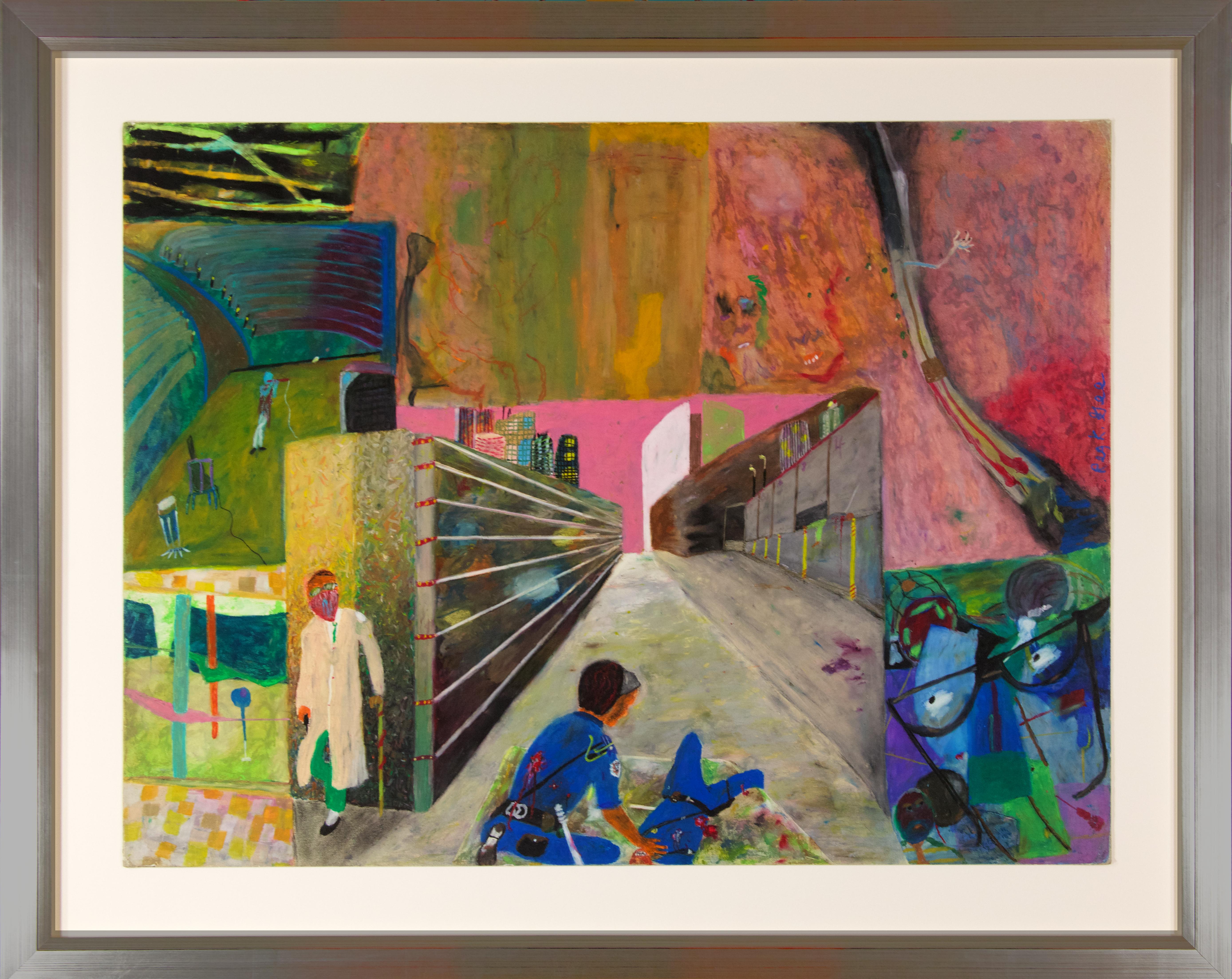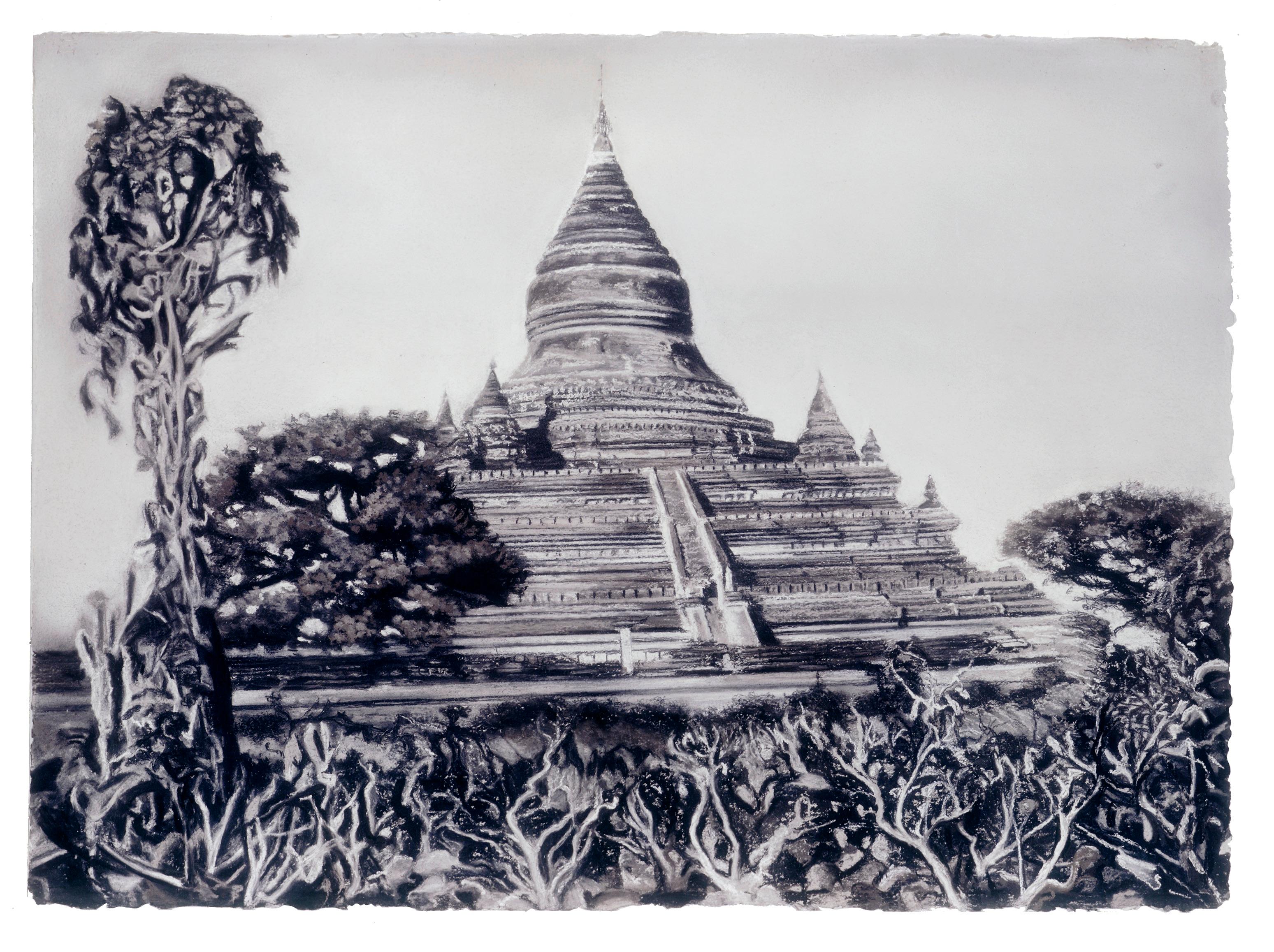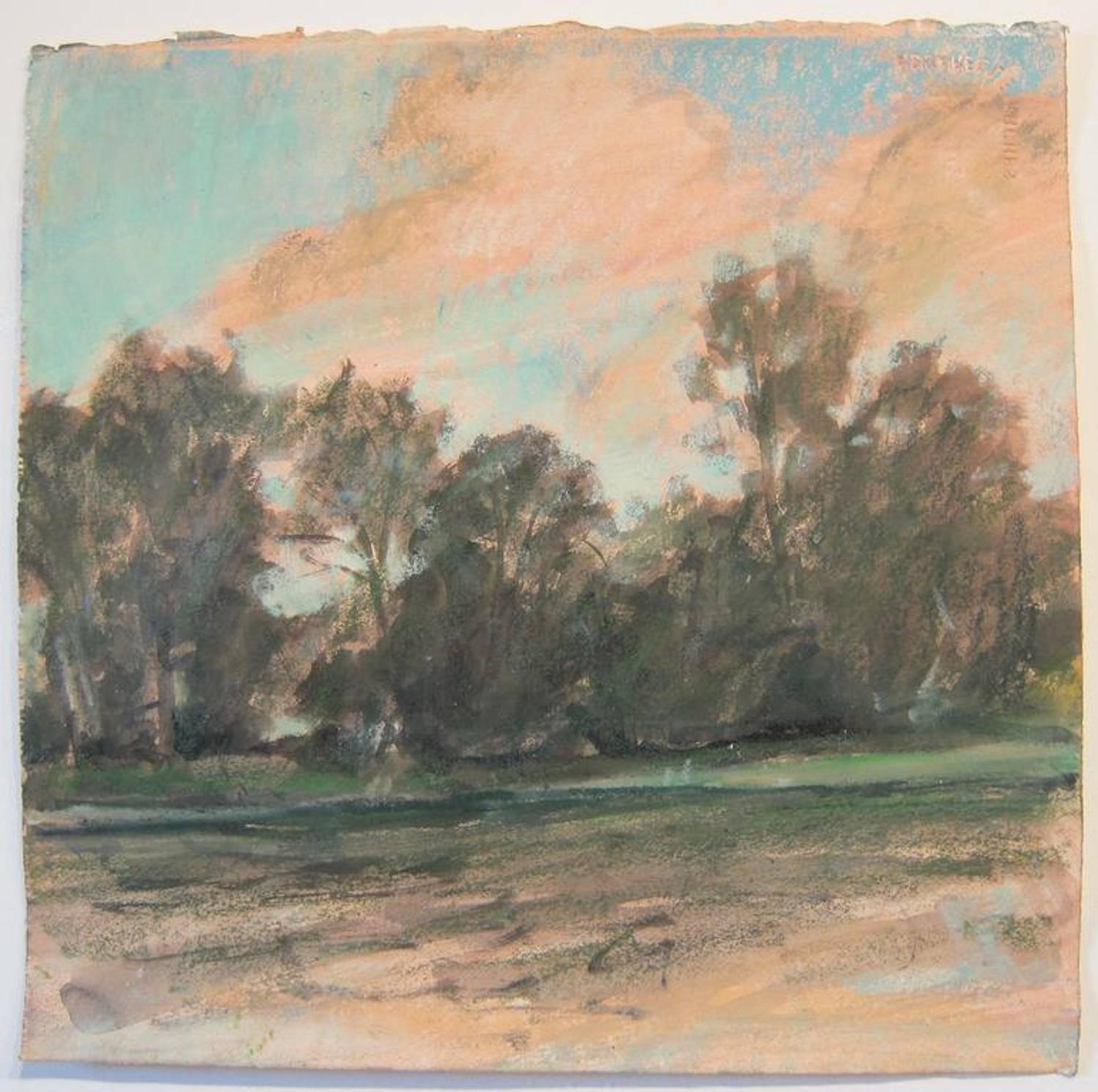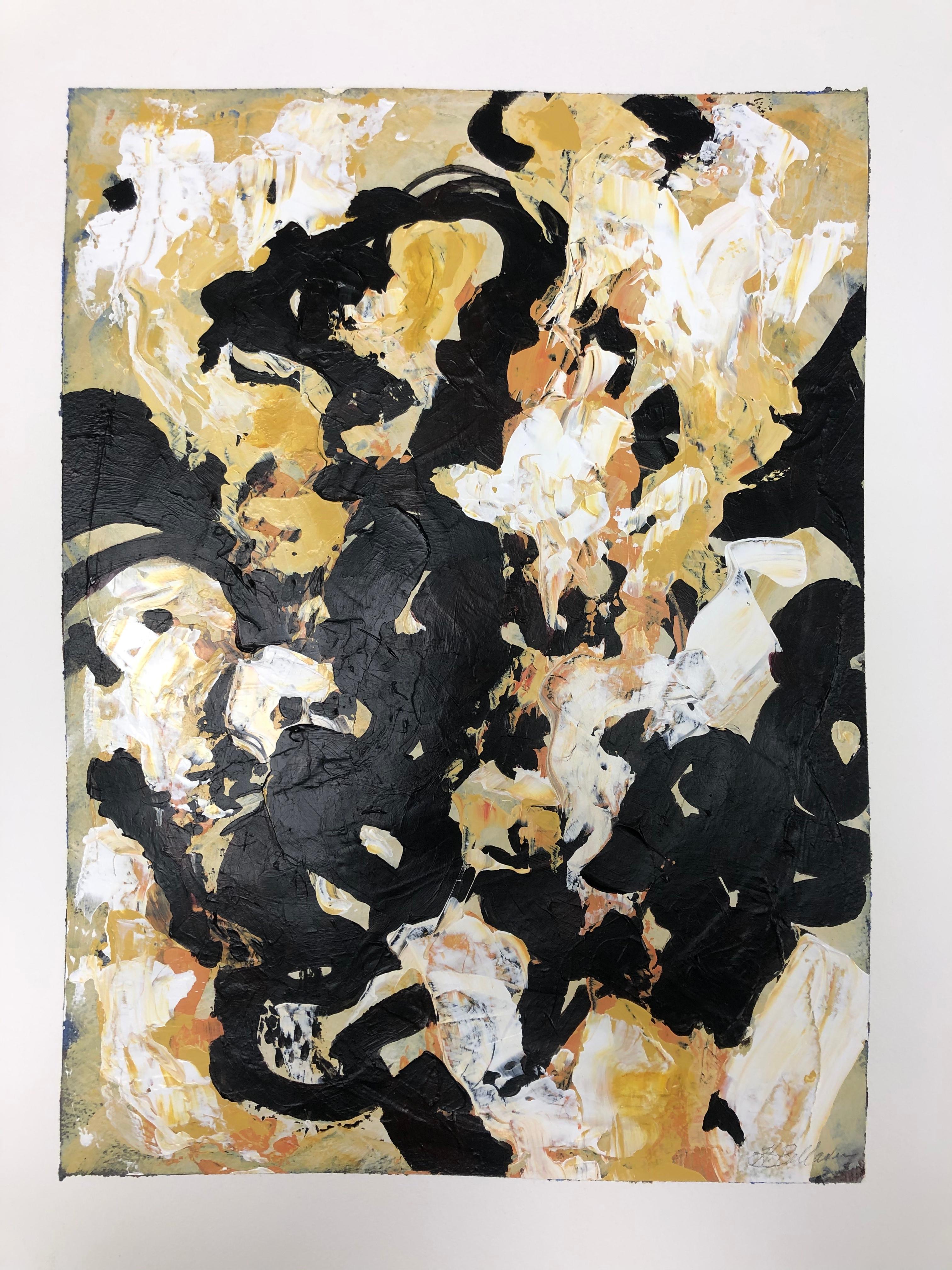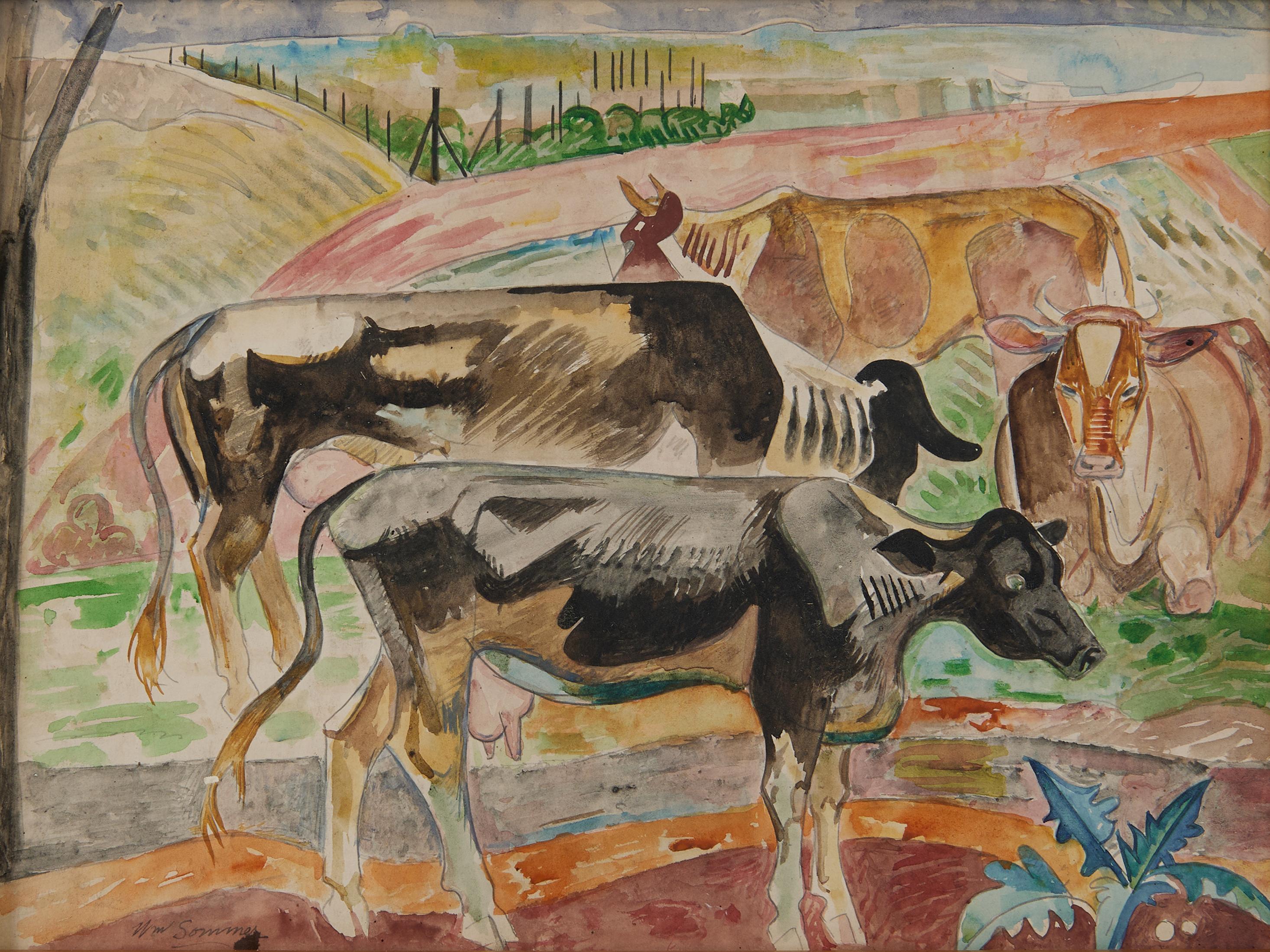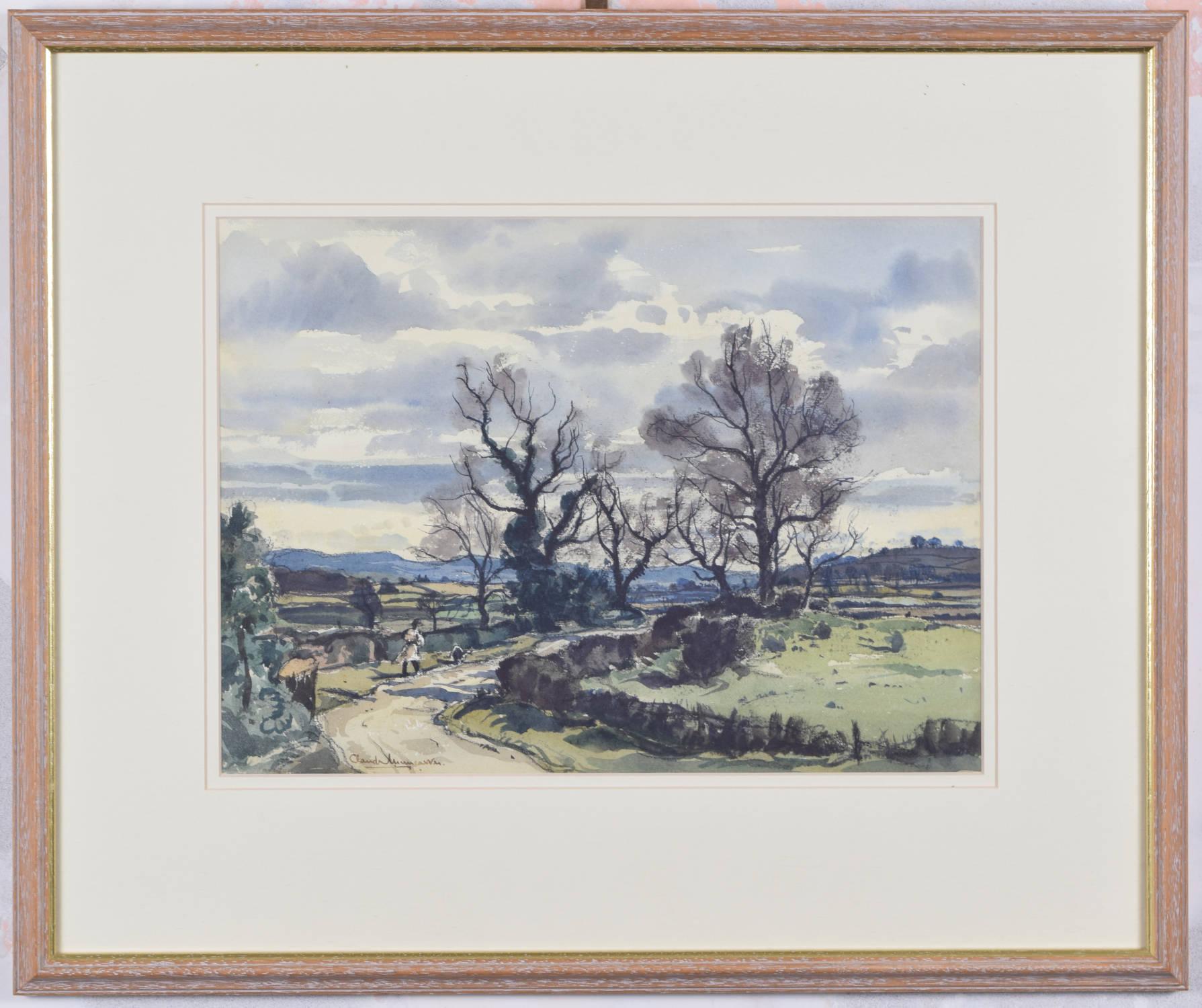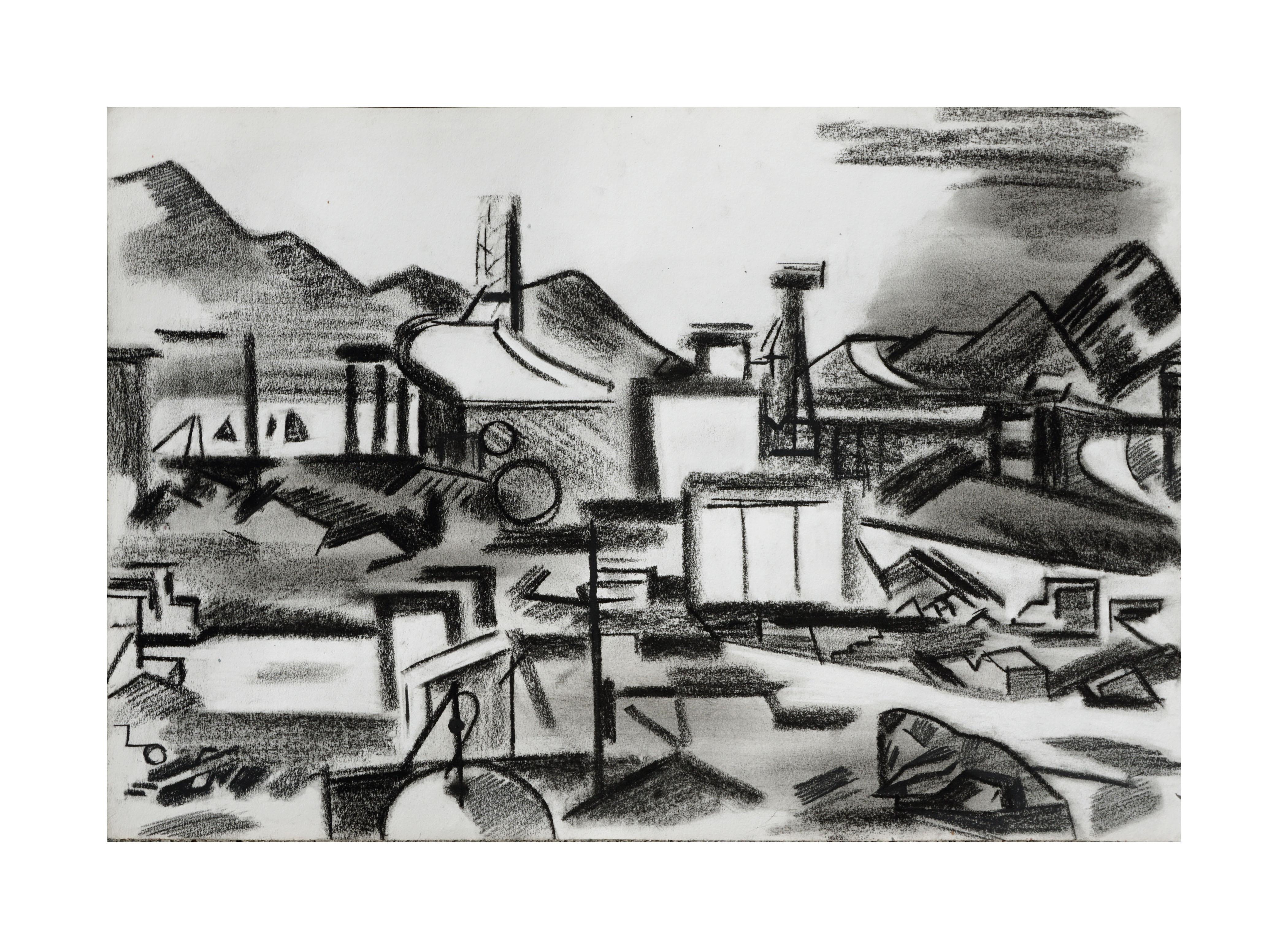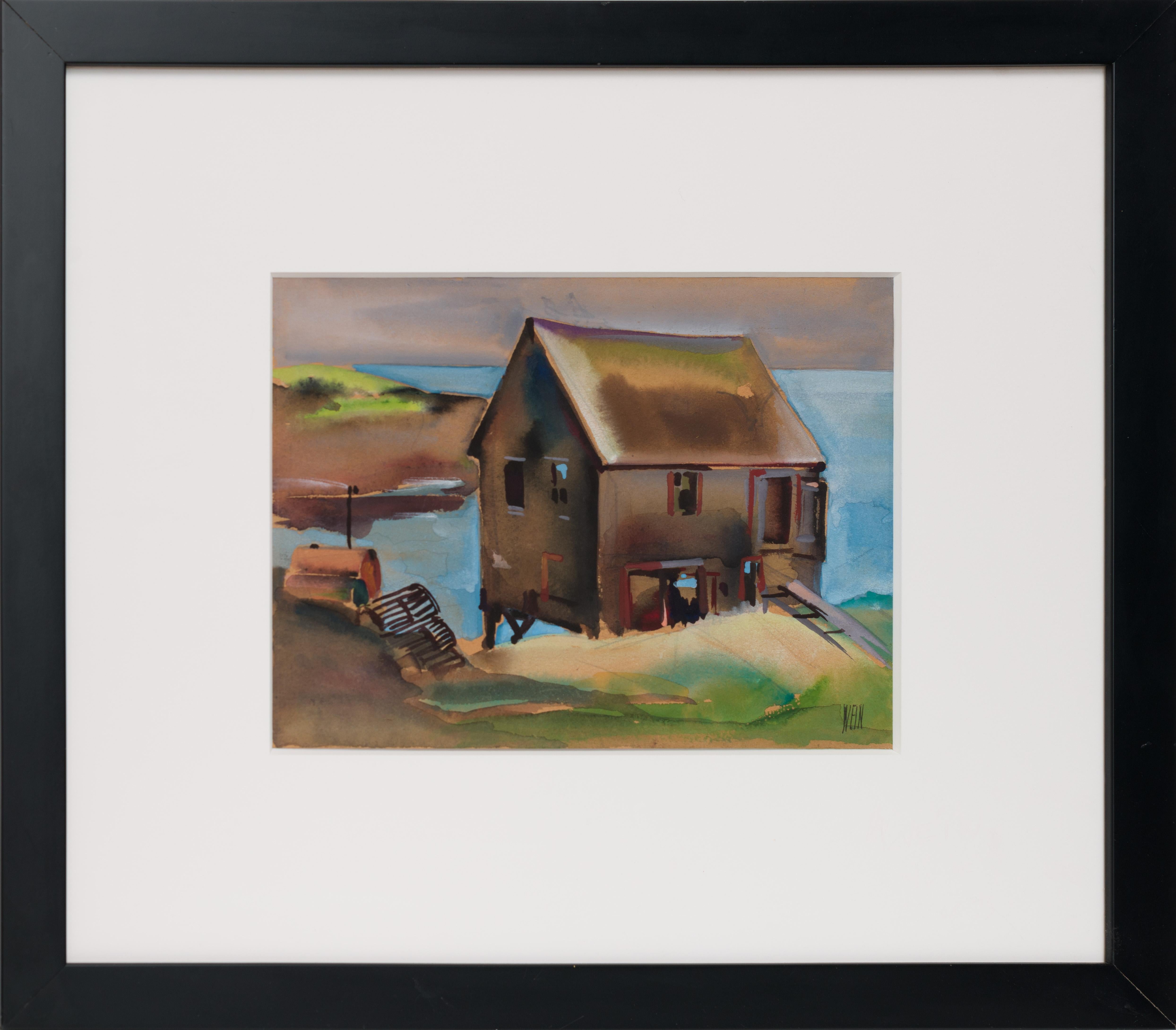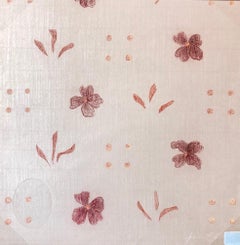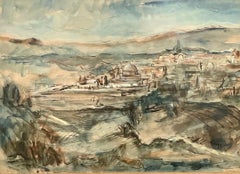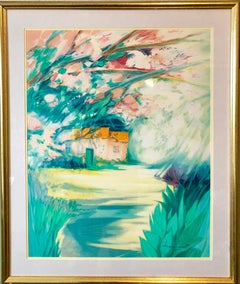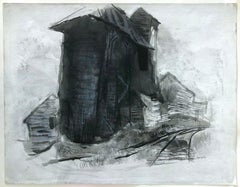
Farm house by Famed Childrens Book Illustrator Tibor Gergely
View Similar Items
Want more images or videos?
Request additional images or videos from the seller
1 of 10
Tibor GergelyFarm house by Famed Childrens Book Illustrator Tibor Gergely1970
1970
About the Item
- Creator:Tibor Gergely (1900, Hungarian)
- Creation Year:1970
- Dimensions:Height: 20.2 in (51.31 cm)Width: 26 in (66.04 cm)
- Period:
- Condition:corners have a bit of wear, otherwise good condition. please see photos.
- Gallery Location:Surfside, FL
- Reference Number:1stDibs: LU3825095972
About the Seller
4.9
Platinum Seller
These expertly vetted sellers are 1stDibs' most experienced sellers and are rated highest by our customers.
Established in 1995
1stDibs seller since 2014
1,565 sales on 1stDibs
Typical response time: 1 hour
More From This SellerView All
- Original Pastel Drawing Flowers, Wallpaper Pattern and Decoration Pop ArtBy Joanne SeltzerLocated in Surfside, FLJoanne Seltzer was born in Philadelphia, Pennsylvania and raised in Charleston, West Virginia. After having majored in journalism at Northwestern University (she graduated in 1963), ...Category
21st Century and Contemporary Pop Art Landscape Drawings and Watercolors
MaterialsPastel, Archival Paper
- German Expressionist Watercolor Painting Jerusalem Landscape Bezalel Israeli ArtLocated in Surfside, FLThis is a great Judaica Israel landscape. The Old City of Jerusalem during the British Mandate in Palestine. 24.5 x 31 image 16 x 22.5 Isidor Ascheim (איזידור אשהיים; 1891-1968) was a German-born Israeli painter and printmaker. Isidor Ascheim was born in Margonin (present-day Poland) in 1891. He was raised in an Orthodox, Judaic, Jewish family and served during World War I. In 1919-23, Ascheim studied under the German Expressionist Otto Mueller in Breslau and was influenced by Erich Heckel of the Die Brücke (The Bridge) group. He immigrated to Mandate Palestine in 1940 and settled in Jerusalem. He was married to the Israeli painter Margot Lange-Ascheim. He taught at the Bezalel School of Art (amongst his students were David Palombo, David Rakia, Aharon Bezalel, Kopel Gurwin and more) and served as its director for several years. He also taught at the Avni Institute in Tel Aviv along with Moshe Mokadi. Marcel Janco and Aaron Giladi. Ascheim's art is based on a direct impression of nature, life and the human form. His oeuvre represents a continuous connection with nature and the human figure, usually executed with a dark palette, the legacy of his German Expressionist roots. He was a contemporary of Jacob Steinhardt, Mordecai Ardon, Josef Budko and Hermann Struck. Awards and recognition In 1953, Ascheim was a co-recipient of the Dizengoff Prize for Painting. In 1955, he received the Jerusalem Prize for Art. In 1956, he participated in the Venice Biennale, Italy Selected collections Fine Arts Museum of San Francisco Israel Museum, Jerusalem References Isidor Aschheim: Drawings & Prints [Izidor Ashhaim: rishumim ve-hedpesim] . Jerusalem: Israel Museum, 1966. Talpir, Gabriel. "100 Artists in Israel". Tel-Aviv: Gazith Art Publishing, 1971. Isidor Ascheim was born in Margonin, Germany (in what is now Poland) in 1891. His father was a prosperous merchant. In spite of his family’s devoutness, Ascheim had both religious training at home and an education in a German school. In 1903 the family moved to Breslau, where he studied in the gymnasium. When War War I broke out, he was drafted into the German army. In 1918, when the war ended, he began studying art in Breslau, and then in Cracow. In 1939 he made Aliyah to the Land of Israel under the auspices of the Aliyah Bet program. He was caught by the British government and sent to the Atlit detention camp for about seven months. After he was released he settled in Jerusalem and found employment as a lecturer at the “New Bezalel.” In 1946 he married the painter Margot Lange Ascheim. From 1960-1961 he served as director of the “New Bezalel.” Most of Ascheim’s work was in the field of prints. In the 1920s he also produced engravings. Later he specialized in stone printing (lithography), including Biblical subjects, landscapes, and expressionist subjects. In addition, he painted. Education 1919-1923 Art Academy, Breslau, Germany, (now Wroclaw, Poland) with Otto Mueller, an important expressionist painter. Art studies, Professor Pautsch, Academy of Fine Arts, Cracow, Poland Teaching 1943 Bezalel Academy of Art & Design, Jerusalem, was director for some time. 1961-1960 Director, New Bezalel, Jerusalem Collective Annual Exhibition by Palestinian Artists Art Gallery of the ''Habima'' Building, Tel Aviv1944 Artists: Hermann Struck,Moshe Ziffer...Category
1940s Expressionist Landscape Drawings and Watercolors
MaterialsPaper, Watercolor
- French Modernist Vivid Bright Fauvist Landscape Watercolor Gouache PaintingBy Claude HemeretLocated in Surfside, FLsigned lower right. size includes frame. The French artist Claude Hemeret was born on May 23, 1929. After classical studies at the lycée du Parc Imperial in Nice, he started at the l...Category
20th Century Post-Impressionist Landscape Paintings
MaterialsWatercolor, Gouache
- Modernist Abstract Expressionist Watercolor Painting Bauhaus Weimar Pawel KontnyBy Pawel KontnyLocated in Surfside, FLAbstract watercolor composition bearing the influence of the earlier color-block compositions of Paul Klee. Pawel August Kontny, (Polish-German-American artist) He was born in Laurahuette, Poland, in 1923, the son of a wealthy pastry shop owner. In 1939 he began studying architecture in Breslau where he was introduced to the European masters and to the work of some of the German Expressionists, soon afterward banned as "degenerate artists" and removed from museums throughout Germany by the Nazi regime. His studies were interrupted by World War II. Drafted into the German army, traveling in many countries as a soldier, he sketched various landscapes but in 1945, he was captured and held as a prisoner of war in Italy. After the war, he studied at the Union of Nuremberg Architects to help design buildings to replace ones destroyed in the war. He recorded his impressions of the local population and the landscapes through his watercolors and drawings. Pawel Kontny thereafter moved to Nuremberg, Germany, becoming a member of the Union of Nuremberg Architects and helping to rebuild the city's historic center. He soon decided to concentrate on his professional art career. He married Irmgard Laurer, a dancer with the Nuremberg Opera. Pavel Kontny 's career as an artist was launched with his participation in an all German exhibition, held at the Dusseldorf Museum in 1952. He held one-man shows in Germany, Switzerland and the United States. During his trip to the United States in 1960, Kontny became instantly enamored with Colorado, and decided to relocate to Cherry Hills with his wife and two children. He quickly established himself in the local art community, being affiliated for a time with Denver Art Galleries and Saks Galleries. His subject matter became the Southwest. During this time he received the Prestigious Gold Medal of the Art Academy of Rome. His extensive travel provided material for the paintings he did using his hallmark marble dust technique. he also worked equally in pastel, watercolor, charcoal and pencil-and-ink. in a style which merged abstraction and realist styles, influenced by Abstract Expressionist painting and South Western American landscapes. This one bears the influence of Sam Francis. In the early 1960s he was one of only a few European-born professional artists in the state, a select group that included Herbert Bayer (1900-1985), a member of the prewar Bauhaus in Weimar and Dessau, Germany, and Roland Detre (1903-2001), a Hungarian modernist painter. As a Denver, Colorado resident, Pavel Kontny exhibited at galleries and museums throughout the United States, Germany and Japan. There, he was inspired by frequent trips to Native American pueblos in the Southwest, as well as by the study of the Plains Indians of Montana and Wyoming. Over the years Kontny had a number of students and generously helped young artist by hosting exhibitions at his Cherry Hills home. For many years he generously donated his paintings to support charitable causes in Denver. Influences during his European years included German pastelist C.O. Muller, German Informel painter Karl Dahmen and Swiss artist, Hans Erni. In the early 1950s his painting style showed the influence of the Die Brücke (The Bridge), a group of German expressionist artists formed in Dresden in 1905 who had a major impact on the evolution of modern art in the twentieth century in Germany. By the middle of the decade his style incorporated more referential abstraction and total abstraction, resulting in part from his study of Hans Hartung, a German artist based in Paris who exhibited his gestural abstract work in Germany. The American moon landing in 1969 inspired Paul Kontny...Category
20th Century American Modern Abstract Drawings and Watercolors
MaterialsWatercolor, Archival Paper
- Modernist Abstract Expressionist Watercolor Painting Bauhaus Weimar Pawel KontnyBy Pawel KontnyLocated in Surfside, FLAbstract watercolor composition bearing the influence of the earlier color-block compositions of Paul Klee. Pawel August Kontny, (Polish-German-American artist) He was born in Laurahuette, Poland, in 1923, the son of a wealthy pastry shop owner. In 1939 he began studying architecture in Breslau where he was introduced to the European masters and to the work of some of the German Expressionists, soon afterward banned as "degenerate artists" and removed from museums throughout Germany by the Nazi regime. His studies were interrupted by World War II. Drafted into the German army, traveling in many countries as a soldier, he sketched various landscapes but in 1945, he was captured and held as a prisoner of war in Italy. After the war, he studied at the Union of Nuremberg Architects to help design buildings to replace ones destroyed in the war. He recorded his impressions of the local population and the landscapes through his watercolors and drawings. Pawel Kontny thereafter moved to Nuremberg, Germany, becoming a member of the Union of Nuremberg Architects and helping to rebuild the city's historic center. He soon decided to concentrate on his professional art career. He married Irmgard Laurer, a dancer with the Nuremberg Opera. Pavel Kontny 's career as an artist was launched with his participation in an all German exhibition, held at the Dusseldorf Museum in 1952. He held one-man shows in Germany, Switzerland and the United States. During his trip to the United States in 1960, Kontny became instantly enamored with Colorado, and decided to relocate to Cherry Hills with his wife and two children. He quickly established himself in the local art community, being affiliated for a time with Denver Art Galleries and Saks Galleries. His subject matter became the Southwest. During this time he received the Prestigious Gold Medal of the Art Academy of Rome. His extensive travel provided material for the paintings he did using his hallmark marble dust technique. he also worked equally in pastel, watercolor, charcoal and pencil-and-ink. in a style which merged abstraction and realist styles, influenced by Abstract Expressionist painting and South Western American landscapes. This one bears the influence of Sam Francis. In the early 1960s he was one of only a few European-born professional artists in the state, a select group that included Herbert Bayer (1900-1985), a member of the prewar Bauhaus in Weimar and Dessau, Germany, and Roland Detre (1903-2001), a Hungarian modernist painter. As a Denver, Colorado resident, Pavel Kontny exhibited at galleries and museums throughout the United States, Germany and Japan. There, he was inspired by frequent trips to Native American pueblos in the Southwest, as well as by the study of the Plains Indians of Montana and Wyoming. Over the years Kontny had a number of students and generously helped young artist by hosting exhibitions at his Cherry Hills home. For many years he generously donated his paintings to support charitable causes in Denver. Influences during his European years included German pastelist C.O. Muller, German Informel painter Karl Dahmen and Swiss artist, Hans Erni. In the early 1950s his painting style showed the influence of the Die Brücke (The Bridge), a group of German expressionist artists formed in Dresden in 1905 who had a major impact on the evolution of modern art in the twentieth century in Germany. By the middle of the decade his style incorporated more referential abstraction and total abstraction, resulting in part from his study of Hans Hartung, a German artist based in Paris who exhibited his gestural abstract work in Germany. The American moon landing in 1969 inspired Paul Kontny...Category
20th Century American Modern Abstract Drawings and Watercolors
MaterialsWatercolor, Archival Paper
- Modernist Abstract Expressionist Watercolor Painting Bauhaus Weimar Pawel KontnyBy Pawel KontnyLocated in Surfside, FLAbstract watercolor composition bearing the influence of the earlier color-block compositions of Paul Klee. Pawel August Kontny, (Polish-German-American artist) He was born in Laurahuette, Poland, in 1923, the son of a wealthy pastry shop owner. In 1939 he began studying architecture in Breslau where he was introduced to the European masters and to the work of some of the German Expressionists, soon afterward banned as "degenerate artists" and removed from museums throughout Germany by the Nazi regime. His studies were interrupted by World War II. Drafted into the German army, traveling in many countries as a soldier, he sketched various landscapes but in 1945, he was captured and held as a prisoner of war in Italy. After the war, he studied at the Union of Nuremberg Architects to help design buildings to replace ones destroyed in the war. He recorded his impressions of the local population and the landscapes through his watercolors and drawings. Pawel Kontny thereafter moved to Nuremberg, Germany, becoming a member of the Union of Nuremberg Architects and helping to rebuild the city's historic center. He soon decided to concentrate on his professional art career. He married Irmgard Laurer, a dancer with the Nuremberg Opera. Pavel Kontny 's career as an artist was launched with his participation in an all German exhibition, held at the Dusseldorf Museum in 1952. He held one-man shows in Germany, Switzerland and the United States. During his trip to the United States in 1960, Kontny became instantly enamored with Colorado, and decided to relocate to Cherry Hills with his wife and two children. He quickly established himself in the local art community, being affiliated for a time with Denver Art Galleries and Saks Galleries. His subject matter became the Southwest. During this time he received the Prestigious Gold Medal of the Art Academy of Rome. His extensive travel provided material for the paintings he did using his hallmark marble dust technique. he also worked equally in pastel, watercolor, charcoal and pencil-and-ink. in a style which merged abstraction and realist styles, influenced by Abstract Expressionist painting and South Western American landscapes. This one bears the influence of Sam Francis. In the early 1960s he was one of only a few European-born professional artists in the state, a select group that included Herbert Bayer (1900-1985), a member of the prewar Bauhaus in Weimar and Dessau, Germany, and Roland Detre (1903-2001), a Hungarian modernist painter. As a Denver, Colorado resident, Pavel Kontny exhibited at galleries and museums throughout the United States, Germany and Japan. There, he was inspired by frequent trips to Native American pueblos in the Southwest, as well as by the study of the Plains Indians of Montana and Wyoming. Over the years Kontny had a number of students and generously helped young artist by hosting exhibitions at his Cherry Hills home. For many years he generously donated his paintings to support charitable causes in Denver. Influences during his European years included German pastelist C.O. Muller, German Informel painter Karl Dahmen and Swiss artist, Hans Erni. In the early 1950s his painting style showed the influence of the Die Brücke (The Bridge), a group of German expressionist artists formed in Dresden in 1905 who had a major impact on the evolution of modern art in the twentieth century in Germany. By the middle of the decade his style incorporated more referential abstraction and total abstraction, resulting in part from his study of Hans Hartung, a German artist based in Paris who exhibited his gestural abstract work in Germany. The American moon landing in 1969 inspired Paul Kontny...Category
20th Century American Modern Abstract Drawings and Watercolors
MaterialsWatercolor, Archival Paper
You May Also LikeView All
- "Chemical Skoids Void Balance, " Acrylic on Paper signed by Reginald K. GeeBy Reginald K. GeeLocated in Milwaukee, WIThis oil pastel artwork, 'Chemical Skoids Void Balance,' Reginald K Gee plays with space and perspective. As in a collage, a technique that modern a...Category
1990s Neo-Expressionist Figurative Drawings and Watercolors
MaterialsAcrylic
- Temple by Michele Zalopany, Burmese temple charcoal and pastel landscapeBy Michele ZalopanyLocated in New York, NYThis black and white charcoal and pastel painting features a Burmese temple landscape. Rising from clouds of gnarled trees, the temple’s triangular shape thins to a pointed dome, wit...Category
1980s Realist Landscape Paintings
MaterialsCharcoal, Pastel
- Daisy Craddock, Thousand Islands, Oil pastel landscape, 2008By Daisy CraddockLocated in New York, NYDaisy Craddock (b.1949, Memphis,TN) received a BA in Fine Arts from Rhodes College and an MFA in Painting from the University of Georgia. Her work has been exhibited widely throughout the United States. Recent one person shows include the Fischbach Gallery in New York City, November, 2009, and David Lusk...Category
Early 2000s American Impressionist Landscape Drawings and Watercolors
MaterialsPaper, Oil Pastel, Acrylic
- Abstract 62 - Abstract Expressionist Mixed Media (Black + White + Yellow + Gold)By Helen BellaverLocated in Gilroy, CA"Abstract 62," is a contemporary Abstract painting by San Jose-based artist Helen Bellaver. In this work, Helen layers a medium onto her paper to create a subtle texture, which she t...Category
2010s Contemporary Abstract Paintings
MaterialsAcrylic, Archival Paper, Mixed Media
- Vaison la Romaine - China Ink Drawing on Paper by Henri Vergé-SarratLocated in Roma, ITVaison la Romaine is an original artwork realized by Henry Verger-Sarrat in 1924. Pencil and china-ink on paper. Hand-signed, dated, and located on the lower left. Very good condi...Category
1920s Modern Figurative Drawings and Watercolors
MaterialsInk
$1,058 Sale Price20% Off - Pheasant Approaching Barn In WinterLocated in Bristol, CTWatercolour depicting a pheasant in flight passing a barn in winter signed, Lambert (LR) Art Sz: 9 1/2"H x 14 1/2"W Frame Sz: 16 1/4"H X 21 1/2W w/ lacquer birdseye maple frameCategory
20th Century Landscape Drawings and Watercolors
MaterialsWatercolor
